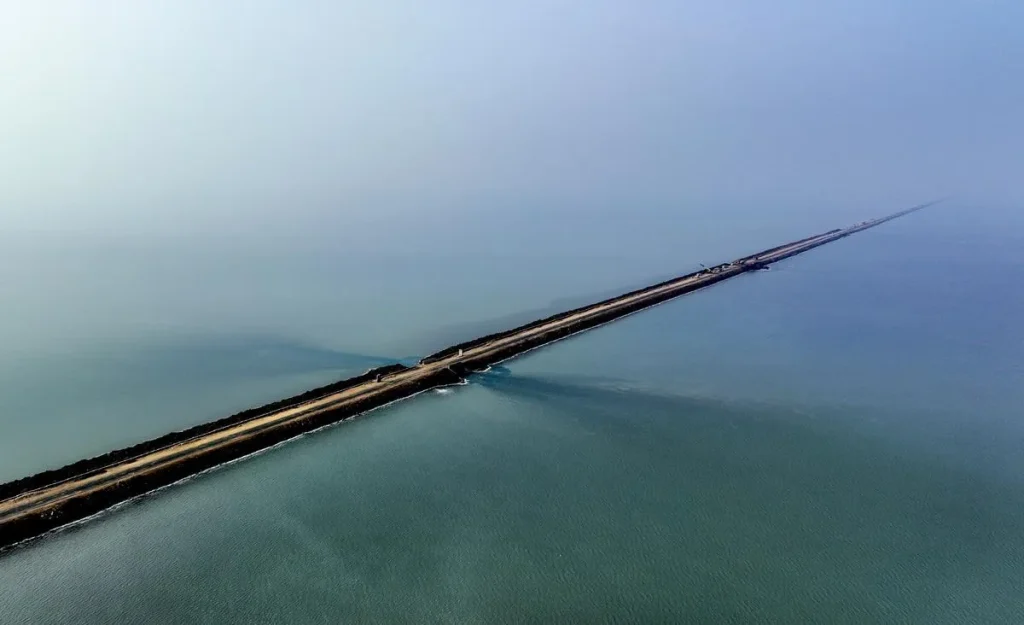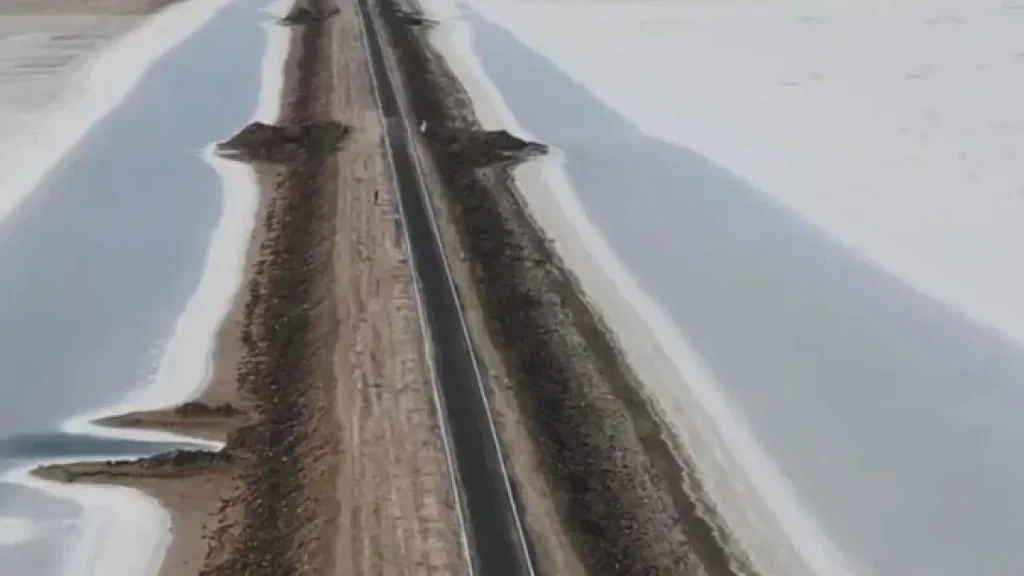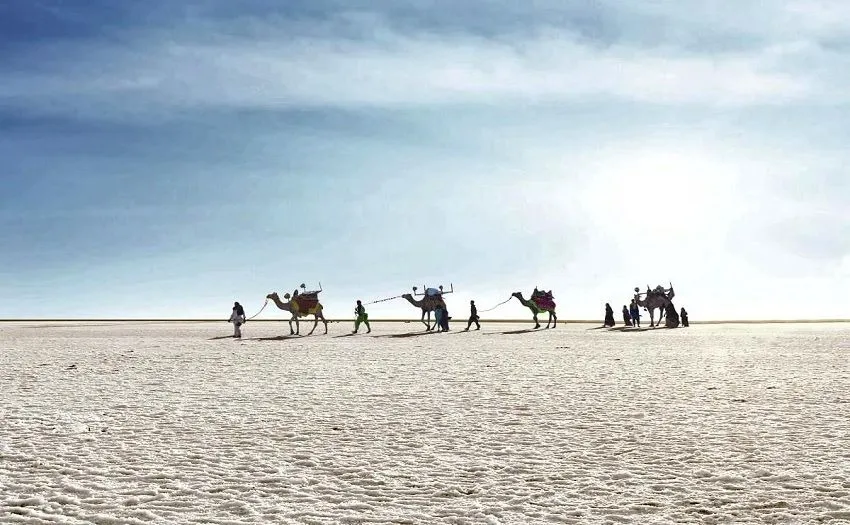India boasts some of the most breathtaking landscapes, from the majestic Himalayas to the lush greenery of the Western Ghats. However, one road stands out for its beauty and tranquility: the stretch known as the “Road to Heaven.” This 32-kilometer route through the Rann of Kutch offers a sensory experience unlike any other. Flanked by the endless expanse of the Rann on one side and the shimmering blue water on the other, travelers can spot cowherds in the distance as they navigate their daily routes.

Connecting Khavda to Dholavira
Until recently, the journey from Bhuj, the capital of Kutch, to Dholavira spanned approximately 240 kilometers. In 2019, a new road connecting Khavda to Dholavira was initiated to shorten this distance, cutting through the Rann. This 30-kilometer stretch began construction in 2024, just in time for the G20 Summit. While the road is not yet fully completed, a one-way lane allows travelers to reach Dholavira, home to the largest relic of the Harappan Civilization in India and recognized as a UNESCO World Heritage Site, offering insights into this once-thriving city.

A Unique Landscape
Part of a 278-kilometer national highway from Ghaduli to Santalpur, this road traverses the White Desert, where the sky reflects in the waters. If you have a drone, this might be one of the best locations in India to capture stunning aerial views. The Rann was originally a shallow area of the Arabian Sea until geological changes sealed off its connection to the sea. During the monsoon, it fills with water, transforming into a white salty expanse, while the rest of the year, it presents an unending salt desert. Travelers can stop along the road, park their vehicles, and dip their feet into the water.

Promoting Archaeological Tourism
Although the ecological impact of constructing this road in such a pristine area raises questions, it is likely to draw more visitors to Dholavira. This ancient Harappan city, located within the Rann of Kutch, is a well-preserved archaeological site that offers a glimpse into the lives of the Indus Valley Civilization. Its layout, complete with fortified walls, granaries, and residential areas, provides valuable insights into the urban planning and social structures of this ancient culture. With Dholavira, Gujarat aims to boost archaeological tourism and share its rich heritage with the world.
